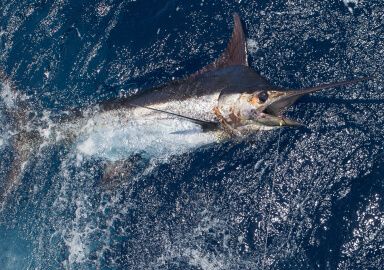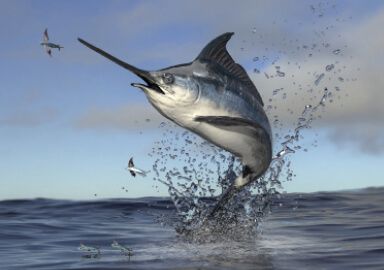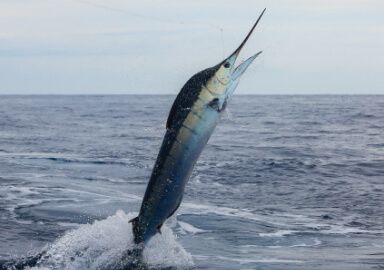Black Marlin
Black marlin is a large, hard fighting, difficult to land fish, and most anglers agree that catching a good black marlin would be the apex of their fishing careers.
View 91 listings
91
listings
–
price starting from
14
countries
–
to the nearest trip
Where and When?
Black marlin are found in all the tropical and subtropical areas of all oceans except the Atlantic (although they occasionally round the Cape of Good Hope into the southern Atlantic, they do not seem to spawn there). They are a fish of extremes. They grow rapidly, move often and great distances and, from one year to the next, numbers in a specific area can increase markedly or collapse. This all makes hooking a good black marlin a serious but worthwhile challenge. While there are fisheries that target and successfully catch black marlin on the western seaboard of USA, the eastern and southern shores of Africa plus some islands including Hawaii, most agree that the optimal place to go to catch prime specimens is Australia. Black marlin are present all around the continent but the best fishing is often to be found off Cairns and the eastern shores of Australia. The Cairns fishery consistently produces more “granders”, fish weighing over 1 000 lbs, than anywhere else, as well as good numbers of all sizes. Where they occur, black marlin may be caught throughout the year, but the peak season in most areas is during the summer months.
About Black Marlin
There are four species of marlin: black, blue, striped and white, but the black marlin (Istiompax indica) is the largest and most impressive all round. It is a solid, robust, torpedo shaped fish with the upper jaw modified into a very strong, but not particularly long, beak. The upper part of its body is dark blue to black while the lower portion is generally silvery white. It can reach at least 4.65 meters (15 ft. 3in.) in length with a mass of 750 kilograms (1 654 lbs.) but most good fish caught are substantially smaller, at around 3.8 meters (12 ft. 7 in.). As juveniles they feed on fish, squid and other invertebrates but, as they mature, they specialise mostly on fish and seem to favour various species oftuna. They are an exceedingly fast moving fish but usually only in short bursts. Black marlin are a fish of the top layers of oceanic waters and are usually highly migratory and very fecund. It is reported that a large female fish can produce in excess of 40 000 000 eggs. Black marlin also support an important commercial fishery, particularly in the Far East.
How to Catch?
As adult black marlin are the fish of the open ocean, nearly all fishing from them is boat based. The main, but important, exception is Jervis Bay in SE Australia where “Jervis Bay Blacks”, juvenile black marlin, come close to shore and may be caught at the right time of year. To do this, however, you must use the correct equipment and find and listen to local knowledge, which is the key to all successful marlin fishing. Choosing the right charter boat, the most popular manner of targeting this species in this generally well organised fishery, is critically important. While many methods can be successful and live bait is often a favourite, finding an experienced skipper and listening to his advice is simply the best way forward. It will usually cost you much money, time and effort to hook a black marlin but investing extra cash on getting really good advice may mean you land your only bite instead of losing the fish of a lifetime.












